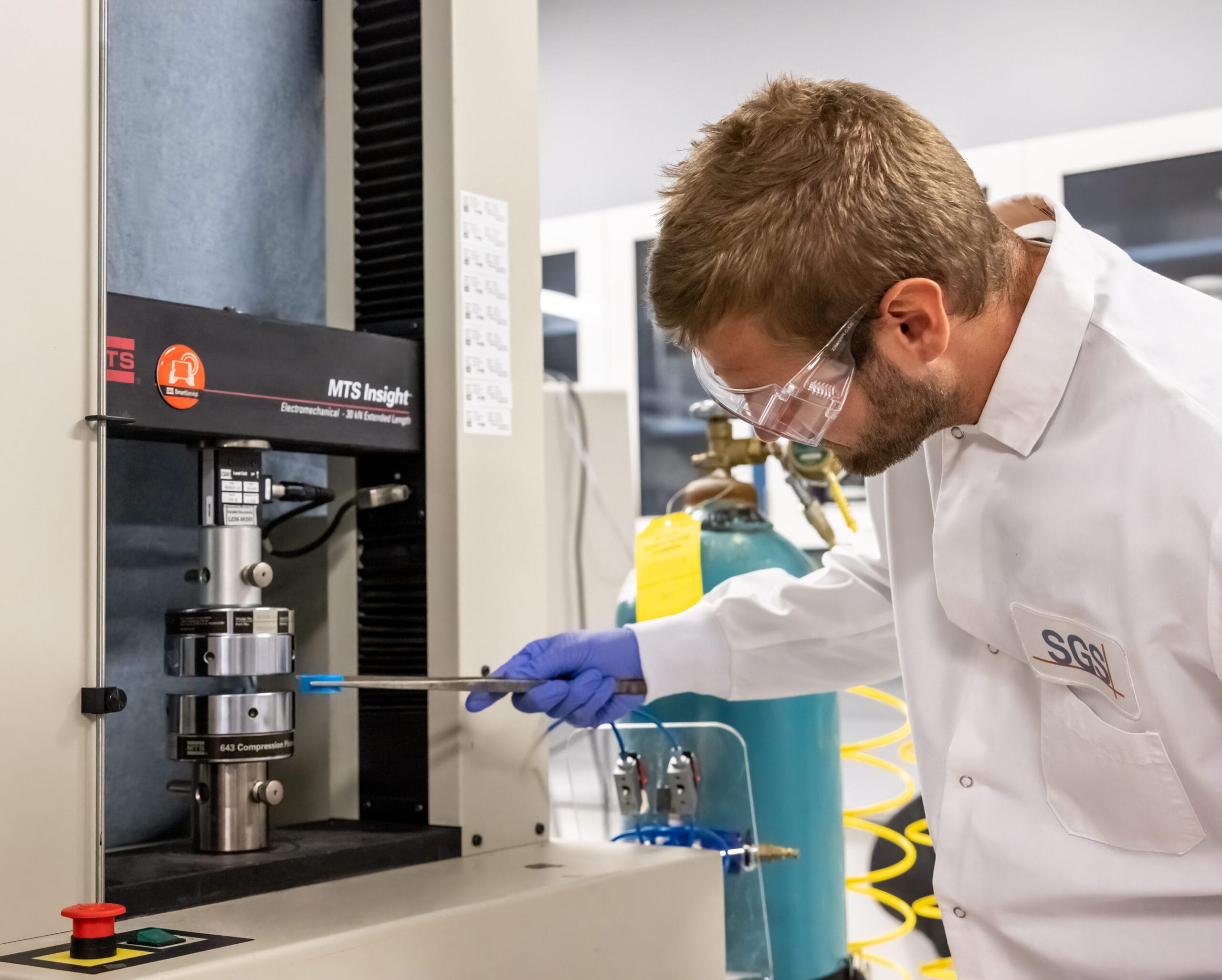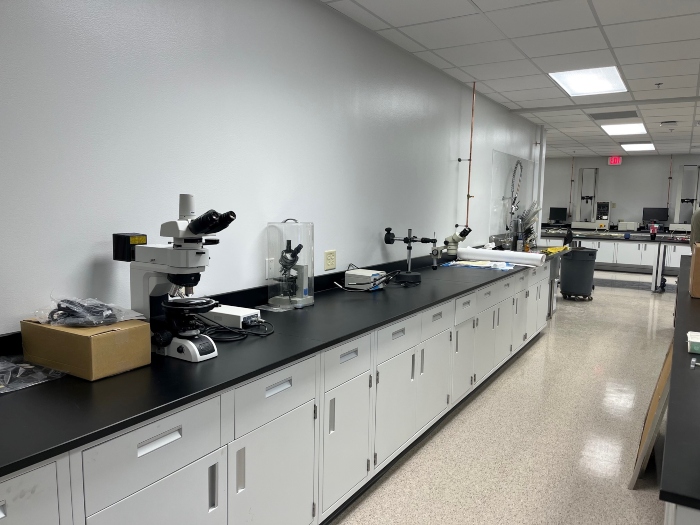Material Testing Lab Solutions: Accuracy, Precision, and Performance Guarantee
Introducing the Keys of Products: Innovations in Modern Material Screening
In the ever-evolving world of products science, scientists are constantly looking for means to unlock the concealed keys of numerous compounds. The pursuit to understand the homes, actions, and prospective applications of products has actually brought about remarkable developments in modern material screening. From nanotechnology and artificial intelligence to non-destructive testing and high-throughput screening, new techniques are emerging that promise to transform our understanding of materials. But what are these developments? Exactly how do they work? And what can they disclose about the materials we run into on a daily basis? In this discussion, we will certainly unravel the mysteries behind these sophisticated technologies and discover exactly how they are improving the field of product science.
Nanotechnology: Enhancing Material Evaluating Capacities
Nanotechnology has actually reinvented product testing by boosting its abilities and allowing for unmatched accuracy and accuracy. With the capacity to adjust and manage products at the nanoscale, engineers and researchers have actually had the ability to uncover brand-new understandings right into the actions and residential or commercial properties of different materials. This has opened up an entire brand-new opportunity for product testing, enabling scientists to delve much deeper right into the essential attributes of products and discover their potential applications.
One of the vital benefits of nanotechnology in material screening is its ability to offer highly exact dimensions. By using specialized nanoscale probes and sensing units, researchers can acquire comprehensive info concerning a material's mechanical, electrical, and thermal homes. This degree of accuracy is vital for markets such as aerospace, vehicle, and electronics, where also the least inconsistency from preferred specs can have substantial effects.
In addition, nanotechnology has allowed for the growth of novel screening strategies that were previously inconceivable. Scanning probe microscopy methods, such as atomic force microscopy and scanning tunneling microscopy, enable scientists to envision and manipulate materials at the atomic degree. This unmatched degree of control and observation has actually led the way for advancements in comprehending product actions and making ingenious products with tailored residential or commercial properties.
Artificial Knowledge: Changing Material Analysis
The combination of artificial intelligence has brought regarding a revolution in material evaluation, significantly boosting the speed, accuracy, and efficiency of the procedure. With the capability to analyze substantial amounts of information in real-time, artificial intelligence (AI) algorithms can promptly identify patterns, anomalies, and relationships that may otherwise go undetected by human analysts. This allows scientists and scientists to gain a deeper understanding of products and their properties, resulting in the development of improved and brand-new products for various applications.
AI-powered material analysis also enables the prediction of material actions under different problems, saving considerable time and sources in the screening phase. By mimicing various circumstances, AI formulas can accurately predict exactly how materials will certainly perform in different settings, enabling designers to make educated decisions regarding their viability for specific applications.
Additionally, AI formulas can maximize material testing procedures by immediately changing parameters and experiment designs based on real-time comments (material testing lab). This not only speeds up the screening procedure but likewise makes certain that the maximum amount of info is gotten from each experiment, leading to more dependable and extensive outcomes

Non-Destructive Screening: Exploring Materials From Within
Non-destructive testing methods use an one-of-a-kind way to discover the inner framework and homes of materials without creating any kind of damages or modification. These methods have changed the field of product testing by making it possible for researchers and designers to check out products from within, without compromising their integrity. Non-destructive testing techniques use numerous modern technologies and approaches to examine products and offer valuable insights right into their make-up, flaws, and performance.
One extensively made use of non-destructive screening technique is ultrasonic screening, which entails sending high-frequency sound waves with a product and analyzing the reflected waves to identify its interior framework. This method is commonly used to find problems, such as spaces or fractures, in steels, compounds, and concrete. Another strategy, referred to as X-ray radiography, uses X-rays to create photos of the inner attributes of a material, making it particularly beneficial for checking welds and discovering surprise defects.
Other non-destructive screening methods consist of magnetic fragment screening, which uses electromagnetic fields to determine surface area and near-surface issues in ferromagnetic products, and eddy present screening, which utilizes electromagnetic induction to discover problems in conductive materials. These strategies, along with others like thermography and aesthetic assessment, give valuable details regarding the structural stability and high quality of materials, guaranteeing their reliability and security in different applications.
Non-destructive screening is specifically crucial in sectors such as aerospace, auto, power, and construction, where the efficiency and integrity of materials are of utmost significance. By enabling for thorough product analysis without creating damage or alteration, non-destructive testing strategies play a vital duty in ensuring the high quality and durability of materials in a wide variety of applications.
High-Throughput Screening: Accelerating Product Discovery
High-throughput testing techniques have revolutionized the process of product discovery by increasing the identification and analysis of brand-new products. This method enables researchers to rapidly evaluate a multitude of materials, allowing the recognition of appealing candidates imp source for further investigation.
High-throughput screening includes making use of automated robotics and systems to perform experiments on a big range (material testing lab). This permits scientists to promptly check a wide variety of products under numerous conditions, such as temperature level, stress, and structure. By assessing the resulting information, researchers can recognize materials with wanted homes, such as high stamina, conductivity, or thermal stability
One of the key advantages of high-throughput screening is its capacity to expedite the exploration of brand-new materials with improved residential or commercial properties. Standard methods of product discovery frequently include experimentation, which can be inefficient and taxing. With high-throughput testing, researchers can systematically discover a substantial range of products in a fraction of the moment, considerably quickening the discovery procedure.
Additionally, high-throughput screening can likewise offer important insights right into the underlying structure-property relationships of products. By examining a a great deal of products with differing frameworks and make-ups, researchers can better comprehend how various aspects influence material residential properties. This understanding can then be utilized to design and optimize products with certain residential or commercial properties for various applications, such as power storage, electronics, and medical care.
Advanced Simulation Techniques: Forecasting Product Efficiency
Advanced simulation strategies play an essential function in anticipating the efficiency of products in numerous applications. These strategies include the use of computer versions and mathematical formulas to simulate the actions of materials under different conditions. By mimicing the behavior of products at the molecular and atomic level, researchers can get important understandings right into their mechanical, thermal, and chemical residential properties.
Among the key advantages of innovative simulation techniques is their capability to anticipate material efficiency before physical testing. This not just saves time and sources however likewise allows researchers to explore a bigger variety of products and style criteria. In the area of materials layout, simulations can assist recognize the ideal composition and structure of a product to accomplish details residential properties.

Along with forecasting product efficiency, these simulation strategies also help in understanding the hidden devices that Get More Info govern product actions. By assessing the simulation results, scientists can gain understandings right into the fundamental concepts that determine the residential or commercial properties and performance of products.
Final Thought
To conclude, the innovations in material screening techniques have actually substantially improved our understanding and analysis of various materials. Nanotechnology has allowed for enhanced capabilities in testing and manipulating products at the nanoscale. Fabricated knowledge has changed product analysis by giving much faster and extra exact outcomes. Non-destructive testing has allowed us to explore the internal homes of products without creating damages. High-throughput screening has accelerated the exploration of new products. Advanced simulation strategies have actually played an essential function in predicting product performance. These technologies remain to unlock the keys of products and drive additional advancements in various markets.
The quest to comprehend the properties, actions, and potential applications of products has led to amazing innovations in modern product testing. These strategies have reinvented the area of material testing by allowing engineers and researchers to take a look at products from within, without compromising their honesty. By checking a large number of materials with varying frameworks and structures, researchers can much better understand how different variables affect material residential properties. In the area of products style, simulations can help identify the ideal make-up and framework of a product to accomplish specific properties.
In final thought, the developments in product screening techniques have actually considerably enhanced our understanding and analysis of different materials.